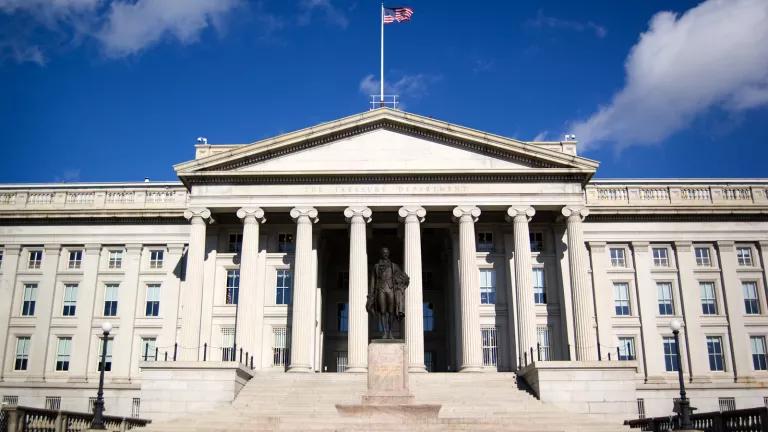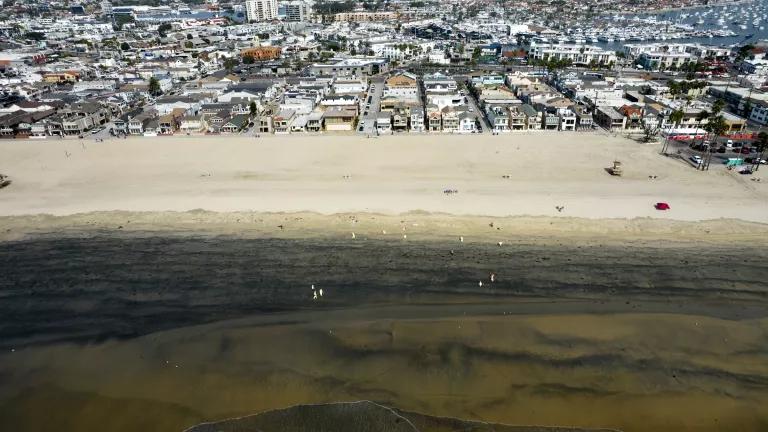
Chetro Ketl, Pueblo Bonito Ruins
The U.S. Department of the Interior’s Bureau of Land Management (BLM) continues to offer millions of acres of public lands to the fossil fuel industry with minimal public input and little consideration for public health, ecological and cultural values, or the climate.
As we previously reported, one place under siege by oil and gas development is the Greater Chaco region of New Mexico. It is home to Chaco Culture National Historical Park—a UNESCO World Heritage Site and International Dark Sky Park—which hosts exceptional concentrations of archaeological sites considered sacred ancestral homelands by the Navajo and Pueblo people.
Despite the region’s cultural and archaeological significance, around 90 percent of its lands have already been leased for oil and gas drilling. The visual landscape has been considerably altered due to the proliferation of wells, pipelines, and access roads. This hasn’t stopped BLM from making additional leasing and development available to industry through the issuance of a resource management plan amendment, which projects even more drilling and hydraulic fracturing or “fracking.”
There are already over one million acres of land open to oil and gas leasing consisting of more than 37,000 existing oil and wells drilled as of August 2017. Nonetheless, oil and gas leasing, exploration, and development would increase under BLM’s plan amendment. BLM projects over 3,000 new wells in the planning area.
BLM concedes that fracking along with the use of horizontal drilling technologies may result in more wells and different impacts than anticipated in its resource management plan for Greater Chaco from 2003. Significant leasing has taken place since then and BLM continues to issue permits to drill under the old plan without analyzing the environmental impacts of fracking, such as implications for water supplies, air and water quality, community health, cultural resources, and the climate. NRDC and its coalition partners challenged some of these permits in court and the Tenth Circuit Court of Appeals agreed that they were unlawful under the National Environmental Policy Act.
BLM’s plan amendment was supposed to disclose the impacts of horizontal drilling and fracking to the public and address tribal concerns. This did not happen, and the plan is deficient in several ways.
First, BLM fails to permanently protect lands within an approximately 10-mile radius around Chaco Culture National Historical Park, consistent with the Chaco Cultural Heritage Area Protection Act, which was passed by the House and awaits action by the Senate.
Second, BLM selected its preferred alternative over a citizen-proposed alternative that included a suite of measures designed to maximize protection of the Chacoan landscape and despite objections from indigenous leaders and conservation organizations about the dangers to the health and safety of people living in nearby communities; concerns about impacts to viewsheds, night skies, recreation, and lands with wilderness characteristics; and adverse effects to traditional cultural properties and ceremonies, sacred sites, and landscapes.
Third, despite BLM’s acknowledgment in the plan that the potential effects from cumulative greenhouse gas emissions would contribute to documented climate-related effects, such as: long-term global temperature change, intensified droughts, sea level rise, flooding, and health issues associated with poor air quality, BLM continues to conceal the climate impacts of its decisions. As one example, although methane is a greenhouse gas pollutant of concern in the planning area, BLM fails to disclose its climate impacts over the 20-year life of the plan. This is concerning since methane is a potent greenhouse gas that can have a disproportionately large climate-changing impact in the near term.
BLM also refuses to use available tools to disclose the significance of the climate impacts to the public—such as the social cost of carbon—which remains the best available scientific and economic basis for determining the value of avoiding each ton of greenhouse gas emissions. Instead of providing a full economic picture to the public, BLM discloses the monetary benefits of continued fossil fuel development—but fails to monetize the associated costs that will be borne by the public—including those related to climate change.
Fourth, risks to public health and safety would increase from current levels as development continues in the area. For example, BLM fails to address community concerns about impacts to water. BLM acknowledges that fracking of the projected wells would require an estimated 2.5 billion gallons of water, which is expected to come primarily from fresh groundwater resources. Groundwater is the primary source of municipal, Tribal, and agricultural water supplies in the planning area and fracking operations could reduce or deplete potable water supplies. Other threats to groundwater include spills and leaks during or following fracking operations, failed casing seals, pipeline breaks, abandoned wells, and deep-well disposal of flowback or produced wastewater.
Additionally, hazardous air pollutant emissions—known or suspected to cause cancer or other serious health effects or adverse environmental impacts—occur during well development and production. Criteria air pollutants, such as ozone and particulate matter, are also present. Air pollution aggravates problems like lung disease and heart conditions, which is especially concerning now in light of the COVID-19 global pandemic.
Fifth, BLM defers analysis of the level and intensity of impacts on nearby environmental justice populations to future permitting decisions, citing insufficient information. Impacts on these populations could include long-term impacts on visual setting, increased noise, vehicle traffic from drilling and production operations, exposure to hazardous materials, and adverse effects from air quality.
Despite the far-reaching implications of this plan for Greater Chaco over the next two decades, BLM has so far refused to extend the public comment period to ensure that everyone affected can meaningfully participate. Since BLM released the draft plan amendment, the All Pueblo Council of Governors, New Mexico Congressional Delegation, among others, have urged BLM to extend the public comment period due to the COVID-19 crisis, which prevents BLM from conducting in-person tribal consultation and public meetings. Communities in Greater Chaco are currently dealing with the COVID-19 crisis—in fact, the highest number of cases in New Mexico are located in the northern part of BLM’s planning area near population centers, including Farmington. Native Americans in particular are experiencing unusually large numbers of COVID-19 cases, which highlights the urgent need to extend the comment period to ensure that every affected person’s voice can be heard. Those lacking the resources to submit comments online may be unable to participate, as less than half of Tribal households have fixed broadband access.
The Administration instead focuses its attention on rescuing fossil fuel interests—putting polluters before people.
You can take action to protect this sacred landscape here.
To learn more, please check out this video created by our indigenous partners with the We Are Greater Chaco coalition.



